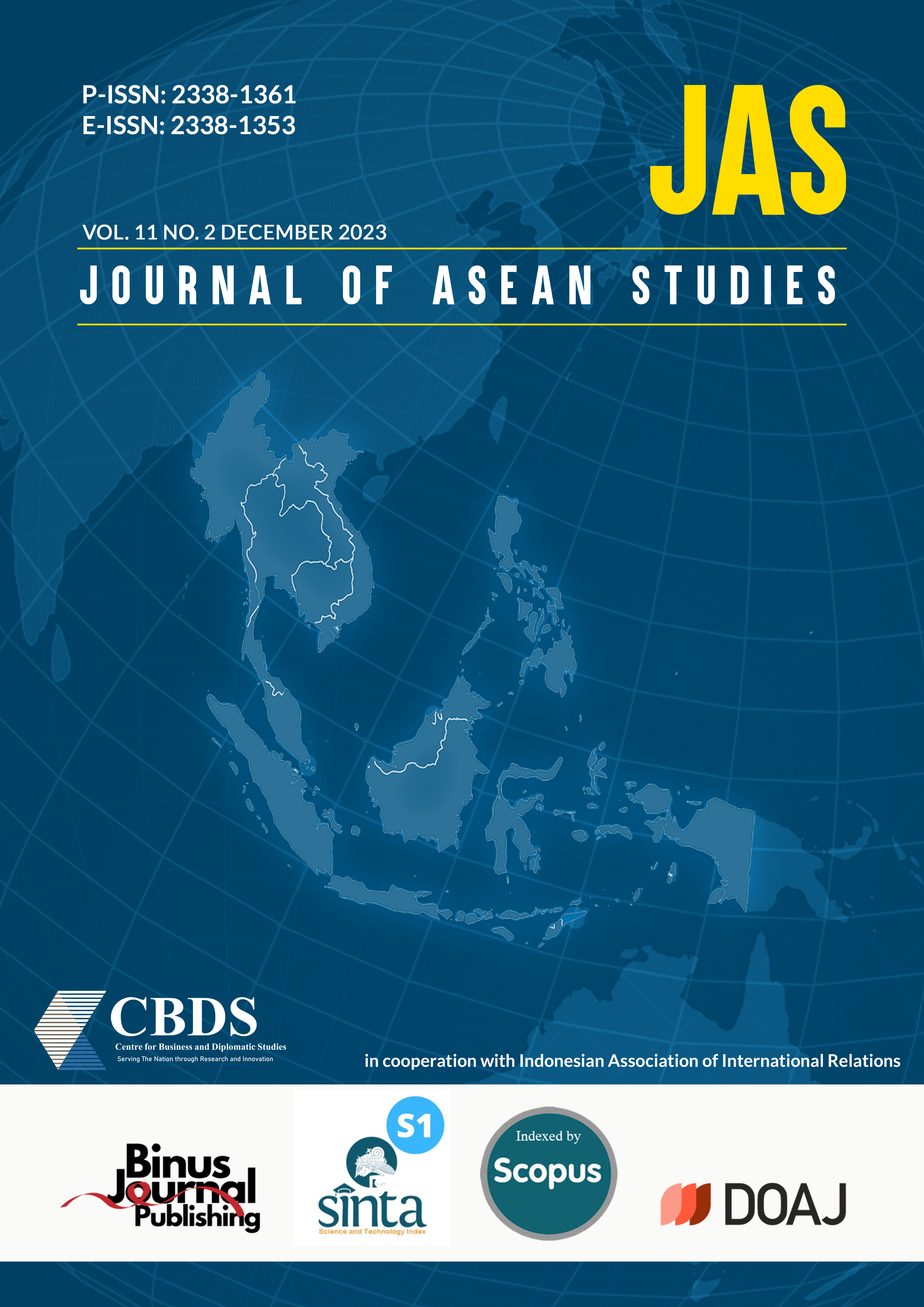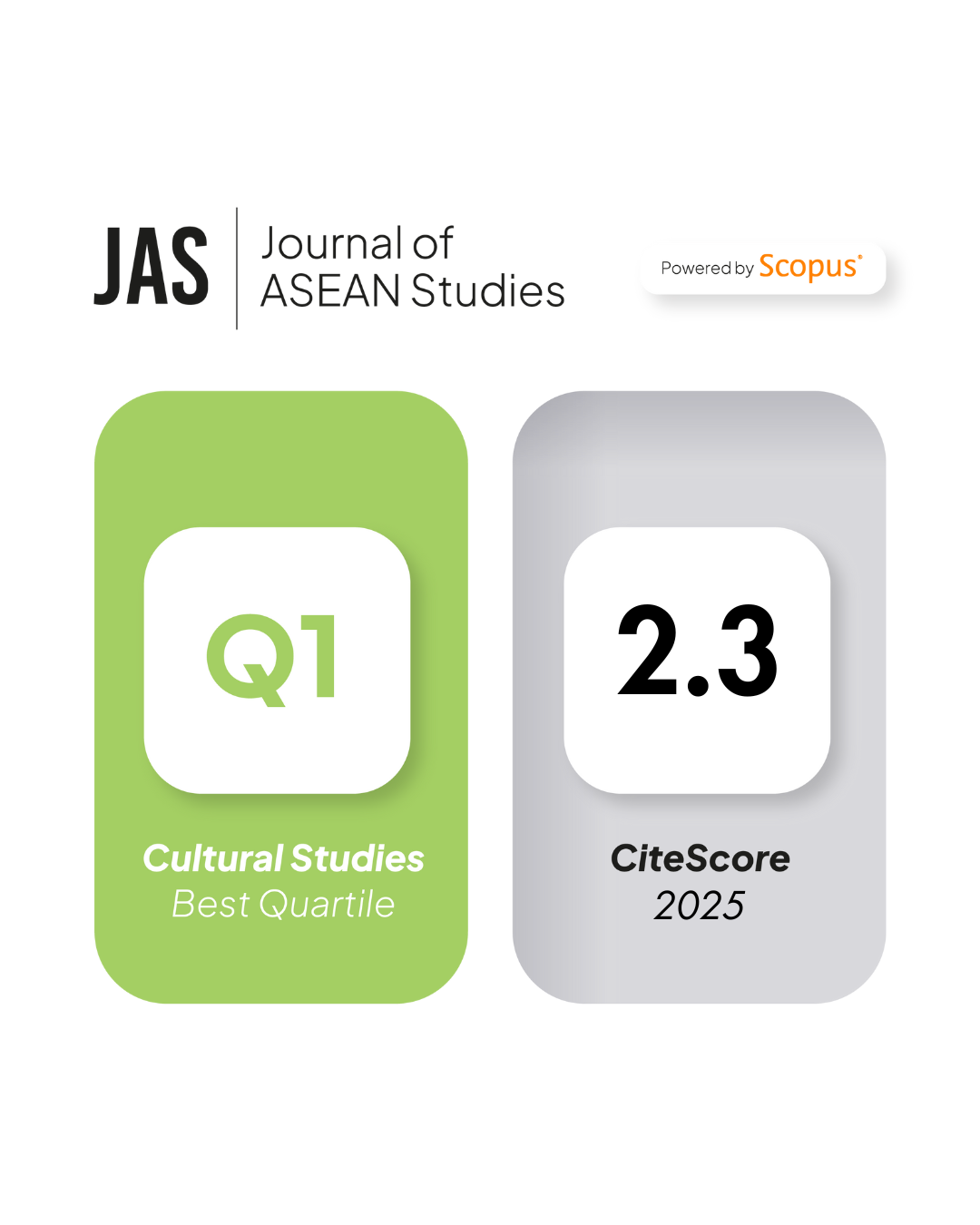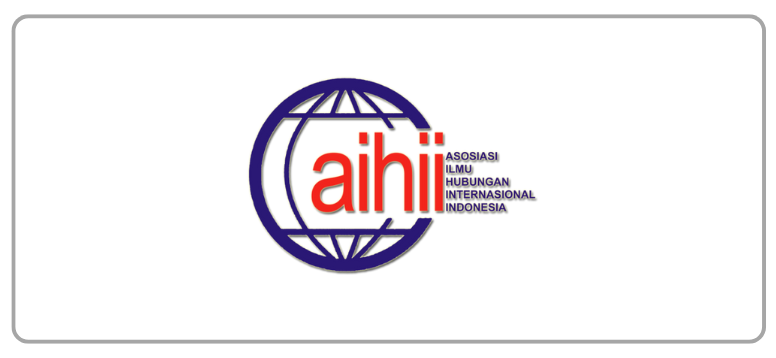A Comparative Study Between Organic Agriculture for Vegetables and Fruits Production in Lao PDR and the MRL Approach Used by Other Countries in the Mekong Region
DOI:
https://doi.org/10.21512/jas.v11i2.9235Keywords:
Lao PDR, organic agriculture, food safety, chemical reduction, Maximum Residue Limits (MRL)Abstract
Food safety and the reduction of chemical use in agriculture, in particular, are common issues that reflect consumer concerns in many developing countries. This paper summarizes the history of the development of Organic Agriculture (OA) in Lao PDR, followed by the outline of the Japan International Cooperation Agency (JICA) Clean Agriculture Development Project (CADP) which supports organic vegetables and fruits production under the clean agriculture policy promoted by the Lao government. Next, the relevant policies of its neighboring countries in the Mekong region (Thailand, Vietnam, and Cambodia) are also summarized. The policies in these countries focus mainly on reducing chemical residues based on the Maximum Residue Limits (MRL) rather than promoting OA, which has recently been included in their national policies in response to social demands for chemical reduction in agriculture. Finally, the paper compares the approach of Lao PDR and other countries in the Mekong region. As a result, the Lao approach can contribute to improving both food safety and income generation of farmers. In contrast, the MRL-based approach has some limitations due to its insufficient operations under the regulatory systems in these countries. This suggests that the Lao approach should be taken into consideration by other developing economies where small-scale farmers are the majority.
References
Buurma, J., & Saranark, J. (2006). Supply-chain development for fresh fruits and vegetables in Thailand. In R. Ruben, M. Slingerland, & H. Nijhoff (Eds.), Agro-food chains and networks for development (pp. 119−127). Springer Science & Business Media.
Chitov, T. (2020). Understanding Production and Safety Situations of Organic Food in Thailand. In B. C. Goh & R. Price (Eds.), Regulatory issues in organic food safety in the Asia Pacific (pp. 171−198). Springer.
Clean Agriculture Standard Center. (2018). Basic Knowledge on organic agriculture. Training material of Clean Agriculture Standard Center (original text is in Lao language). Unpublished manuscript.
Conrado, V. D. (2018). The economics of organic and conventional vegetables production in Northern Philippines. Journal of Biodiversity and Environmental Sciences (JBES), 13(2), 402−415. https://www.innspub.net/wp-content/uploads/2022/06/JBES-V13-No2-p402-415.pdf
Crowder, D. W., & Reganold, J. P. (2015). Financial competitiveness of organic agriculture on a global scale. Proceedings of the National Academy of Sciences, 112(24), 7611−7616. https://www.pnas.org/doi/10.1073/pnas.1423674112
Department of Agriculture, Ministry of Agriculture and Forestry, Lao PDR. (2016). Strategic plan for national organic agriculture development 2025, vision towards 2030. Lao PDR.
Department of Plant Protection Sanitary and Phytosanitary, General Directorate of Agriculture (GDA), Ministry of Agriculture, Forestry, and Fisheries. (2020). CamGAP certification manual. https://camgap-camorg.org/userfiles/images/Documentations/CamGAP/Final-GDA CamGAP Certifcation Manual_EN-01-10-20.pdf
Division of Standard and Certification, Department of Agriculture, Ministry of Agriculture and Forestry, Lao PDR. (2023). Response to questionnaire by authors. unpublished manuscript.
Ebner, P., Vipham, J. & Hok, L. (2020, October). Food safety in Cambodia: Current programs and opportunities. Feed the Future. https://ag.purdue.edu/food-safety-innovation-lab/wp-content/uploads/2021/01/FSIL-Food-Safety-in-Cambodia-Current-Programs-and-Opportunities-Final.pdf
Food and Agriculture Organization of the United Nations. (2018, June 29). Regional programme: Towards a non-toxic environment in South-East Asia phase II. Swedish Chemistry Agency. https://www.kemi.se/download/18.164ad6b3172927a92897273d/1598537771703/progress-report-2017.pdf
Food and Agriculture Organization of the United Nations. (2020). Evaluation of FAO’s Asia regional integrated pest management and pesticide risk reduction programme in the Greater Mekong subregion. https://www.fao.org/3/ca7783en/CA7783EN.pdf
Food and Agriculture Organization of the United Nations. (2021). Situation analysis report: Pesticide monitoring programme in Association of Southeast Asian Nations (ASEAN). https://www.fao.org/3/cb4742en/cb4742en.pdf
Ha, T. M., Shakur, S., & Do, K. H. P. (2019). Consumer concern about food safety in Hanoi, Vietnam. Food Control, 98, 238−244. https://doi.org/10.1016/j.foodcont.2018.11.031
Hoi, P. V., Mol, A. P., & Oosterveer, P. J. (2009). Market governance for safe food in developing countries: The case of low-pesticide vegetables in Vietnam. Journal of Environmental Management, 91(2), 380−388. https://doi.org/10.1016/j.jenvman.2009.09.008
Hoi, P. V., Mol, A. P., Oosterveer, P., Van Den Brink, P. J., & Huong, P. T. (2016). Pesticide use in Vietnamese vegetable production: A 10-year study. International Journal of Agricultural Sustainability, 14(3), 325−338. https://doi.org/10.1080/14735903.2015.1134395
JICA Clean Agriculture Development Project. (2019a). Baseline survey by CADP in 2018-2019. Unpublished manuscript.
JICA Clean Agriculture Development Project. (2019b). Price comparison between conventional market (Thongkhankham market) vs. OA market (Vientiane Capital) on vegetables. Unpublished manuscript.
Lao National Statistics Center, Ministry of Planning and Investment. (2016). lao statistics census 2015.
Laohaudomchok, W., Nankongnab, N., Siriruttanapruk, S., Klaimala, P., Lianchamroon, W., Ousap, P., ... & Woskie, S. (2021). Pesticide use in Thailand: Current situation, health risks, and gaps in research and policy. Human and Ecological Risk Assessment: An International Journal, 27(5), 1147−1169. https://www.ncbi.nlm.nih.gov/pmc/articles/PMC8291370/
Ministry of Agriculture and Forestry, Lao PDR. (2015, May). Agriculture development strategy to 2025 and vision to the year 2030. http://maf.gov.la/wp-content/uploads/2016/01/MDS-2025-and-Vision-to-2030-Eng.pdf
Ministry of Agriculture and Forestry, Department of Planning and Finance. (2020). Agricultural statistics year book 2019. https://ali-sea.org/aliseaonlinelibrary-dashboard/get/file/Laos-Agricultural-Statistics-Year-book-2019.pdf
Ngan, N. T., & Ngoc, T. H. (2022). Development of organic agriculture in Vietnam: Some theoretical and practical issues. American Research Journal of Humanities & Social Science (ARJHSS), 5(3), 36−42. https://www.arjhss.com/wp-content/uploads/2022/03/F533642.pdf
Ngo, M. H., Vu, Q. H., Liu, R., Moritaka, M., & Fukuda, S. (2019). Challenges for the development of safe vegetables in Vietnam: An insight into the supply chains in Hanoi city. Journal of the Faculty of Agriculture, Kyushu University, 64(2), 355−365. https://doi.org/10.5109/2339027
Nguyen, M. (2021, August 10). Vietnam organic market. United States Department of Agriculture. https://apps.fas.usda.gov/newgainapi/api/Report/DownloadReportByFileName?fileName=Vietnam%20Organic%20Market_Ho%20Chi%20Minh%20City_Vietnam_08-03-2021
Nguyen, V. K. (2020). Perception of Challenges in Opportunities for Organic Food Research and Development in Vietnam. In B. C. Goh & R. Price (Eds.), Regulatory issues in organic food safety in the Asia Pacific (pp. 199−216). Springer.
Panuwet, P., Siriwong, W., Prapamontol, T., Ryan, P. B., Fiedler, N., Robson, M. G., & Barr, D. B. (2012). Agricultural pesticide management in Thailand: Status and population health risk. Environmental Science & Policy, 17, 72−81. https://doi.org/10.1016/j.envsci.2011.12.005
Panyakul, V. (2012, June). Lao’s organic agriculture: 2012 update. Earth Net Foundation/Green Net. https://unctad.org/system/files/official-document/Lao Organic Agriculture 2012 Update.pdf
Pham, H. V. (2017). Standard application in vegetable production in Vietnam – between path dependence and economic incentives. The case of Hanoi’s city. Journées de Recherches en Sciences Sociales (JRSS), 1−15.
Phopin, K., Wanwimolruk, S., & Prachayasittikul, V. (2017). Food safety in Thailand. 3: Pesticide residues detected in mangosteen (Garcinia mangostana L.), queen of fruits. Journal of the Science of Food and Agriculture, 97(3), 832−840. https://doi.org/10.1002/jsfa.7804
Pongsrihadulchai, A. (2019, June 18). Thailand agricultural policies and development strategies. FFTC Agricultural Policy Platform (FFTC-AP). https://ap.fftc.org.tw/article/1393
Rassapong, S. (2016, November). Pesticides: A cause for concern. LURAS (Lao Upland Rural Advisory Service). https://laowomenorg.files.wordpress.com/2017/09/rassapong_2016_-_luras_pesticides_briefing_lores_.pdf
Rassapong, S., Syfongxay, C., Phanthanivong, I., Syhalad, B., Phimmahthut, S., Manyvong, T., … & Bartlett, A. (2018). Pesticide use in Lao PDR: Health and environmental impacts. ALiSEA. https://ali-sea.org/aliseaonlinelibrary/briefing-note-pesticide-use-in-lao-pdr-health-and-environmental-impact_version-lao-english/
Schreinemachers, P., Afari-Sefa, V., Heng, C. H., Dung, P. T. M., Praneetvatakul, S., & Srinivasan, R. (2015). Safe and sustainable crop protection in Southeast Asia: Status, challenges and policy options. Environmental Science & Policy, 54, 357−366. https://www.researchgate.net/publication/281239669_Safe_and_sustainable_crop_protection_in_Southeast_Asia_Status_challenges_and_policy_options
Schreinemachers, P., Grovermann, C., Praneetvatakul, S., Heng, P., Nguyen, T. T. L., Buntong, B., ... & Pinn, T. (2020). How much is too much? Quantifying pesticide overuse in vegetable production in Southeast Asia. Journal of Cleaner Production, 244, https://www.researchgate.net/publication/336308557_How_much_is_too_much_Quantifying_pesticide_overuse_in_vegetable_production_in_Southeast_Asia
Shennan, C., Krupnik, T. J., Baird, G., Cohen, H., Forbush, K., Lovell, R. J., & Olimpi, E. M. (2017). Organic and conventional agriculture: A useful framing? Annual Review of Environment and Resources, 42, 317−346. https://www.annualreviews.org/doi/pdf/10.1146/annurev-environ-110615-085750
Tawatsin, A., Thavara, U., & Siriyasatien, P. (2015, May). Pesticides used in Thailand and toxic effects to human health. Medical Research Archives. https://esmed.org/MRA/mra/article/view/176/107
Thai-PAN. (2016, October 7). 2nd Report on pesticide contamination monitoring on fruits and vegetables 2016. https://biothai.org/thai-pan-has-published-the-results-of-their-second-round-of-testing-on-chemical-pesticide-residues-for-2016/
The ASEAN Secretariat. (2020). ASEAN statistical yearbook 2020. Association of Southeast Asian Nations (ASEAN). https://www.aseanstats.org/wp-content/uploads/2020/12/ASYB_2020.pdf
The ASEAN Secretariat. (2021). ASEAN statistical yearbook 2021. Association of Southeast Asian. https://asean.org/wp-content/uploads/2021/12/ASYB_2021_All_Final.pdf
The Thailand Life. (2018). The truth about pesticides in Thailand’s food chain. https://www.thethailandlife.com/truth-about-pesticides-thailand
Vagneron, I., & Xong, M. (2015). Consumer perceptions of organic food in the Lao PDR Consumer perceptions of organic food in the Lao PDR through Oxfam's Eat Greener Project -Changing food consumption patterns -A sustainable approach towards economic development in Lao PDR. https://www.researchgate.net/publication/340376166_Consumer_perceptions_of_organic_food_in_the_Lao_PDR_Consumer_perceptions_of_organic_food_in_the_Lao_PDR_Through_Oxfam's_Eat_Greener_Project_-Changing_Food_Consumption_Patterns_-a_Sustainable_Approach_
Wang, H. S., Sthiannopkao, S., Du, J., Chen, Z. J., Kim, K. W., Yasin, M. S. M., ... & Wong, M. H. (2011). Daily intake and human risk assessment of Organochlorine Pesticides (OCPs) based on Cambodian market basket data. Journal of Hazardous Materials, 192(3), 1441−1449. https://doi.org/10.1016/j.jhazmat.2011.06.062
Wanwimolruk, S., Kanchanamayoon, O., Boonpangrak, S., & Prachayasittikul, V. (2015a). Food safety in Thailand 1: It is safe to eat watermelon and durian in Thailand. Environmental Health and Preventive Medicine, 20, 204−215. https://app.amanote.com/v4.0.21/ja/research/note-taking?resourceId=HZmJ23MBKQvf0BhipLfx
Wanwimolruk, S., Kanchanamayoon, O., Phopin, K., & Prachayasittikul, V. (2015b). Food safety in Thailand 2: Pesticide residues found in Chinese kale (Brassica Oleracea), a commonly consumed vegetable in Asian countries. Science of the Total Environment, 532, 447−455. https://doi.org/10.1016/j.scitotenv.2015.04.114
Wanwimolruk, S., Phopin, K., Boonpangrak, S., & Prachayasittikul, V. (2016). Food safety in Thailand 4: Comparison of pesticide residues found in three commonly consumed vegetables purchased from local markets and supermarkets in Thailand. PeerJ, 4. https://doi.org/10.7717/peerj.2432
Willer, H., TrávnÃÄek, J., Meier, C., & Schlatter, B. (Eds.) (2021). The world of organic agriculture: Statistics and emerging trends 2021. FiBL & IFOAM – Organics International. https://www.ifoam.bio/sites/default/files/2022-01/1150-organic-world-2021.pdf
Win, H. E. (2017, January 23). Organic agriculture in Thailand. FFTC Agricultural Policy Platform (FFTC-AP). https://ap.fftc.org.tw/article/1161
Wongprawmas, R., Canavari, M., & Waisarayutt, C. (2015). Food safety assurance system for fresh produce production in Thailand: a review. Quality Assurance and Safety of Crops & Foods, 7(1), 73−88. https://www.researchgate.net/publication/265329667_Food_Safety_Assurance_System_for_Fresh_Produce_Production_in_Thailand_A_Review
World Bank. (2006, February). Vietnam food safety and agricultural health action plan. https://documents1.worldbank.org/curated/en/398891468124788088/pdf/352310VN.pdf
Downloads
Published
How to Cite
Issue
Section
License
Copyright (c) 2023 Takeo Makino, Bouthsakone Inthalangsee

This work is licensed under a Creative Commons Attribution-NonCommercial 4.0 International License.






















